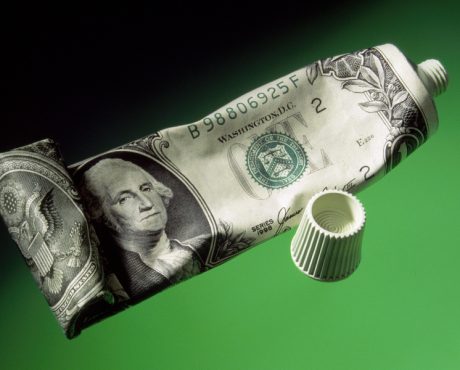PG Stock a Top Pick for a Dividend Portfolio
With the U.S. stock market soaring past its all-time high, the century-old Procter & Gamble Co (NYSE:PG) doesn’t get that much attention. While PG stock has climbed 6.3% year-to-date, the gain is not nearly as impressive as the hot tickers in other sectors.
But for income investors, I believe Procter & Gamble stock is still a must-have. Here’s why.
The keyword here is “dividend,” which, in a surging stock market, doesn’t seem to be all that important.
Right now, the average dividend yield of all S&P 500 companies is 2.07%. But if you can make triple-digit gains by trading some high-momentum tech stock, who cares about a measly two-percent yield? (Source: “P/Es & Yields on Major Indexes,” The Wall Street Journal, last accessed December 22, 2016.)
However, if you look a bit further back, you’ll see that dividends used to be more substantial. For instance, between 1970 and 1990, the average dividend yield of S&P 500 companies was 4.03%.
There are many reasons behind the drop in yield. One of them is the low-interest-rate environment and subsequent rise in stock prices. Another is the emergence of fast-growing tech stocks, some of which carry huge valuations without being profitable. And if a company is not profitable, it probably can’t return much cash to income investors.
The thing is, despite the drop in average yield, the role of dividends—especially to income investors—hasn’t really changed.
Yes, in today’s environment, capital gains seem much more attractive than dividends. However, investors have to rely on the stock market for that to happen. Everything seems to be going well at the moment, but if something happens, be it bad economic data or a drop in commodity prices, market conditions could change very quickly.
And as we have seen numerous times, a market downturn can bring down a lot of stocks, especially those that went up a lot.
That’s where dividend stocks could really start to shine. For income investors who rely on dividends rather than stock price appreciation, the impact of a market downturn might not be that much. This is because for companies to pay out dividends, they don’t need the approval of the stock market.
Of course, companies could still cut their dividends. But for PG stock investors, I don’t think that’s something they need to worry about.
You see, Procter & Gamble is a consumer staples company. People buy its products not out of desire, but out of necessity. There are 21 brands under the P7G label with annual sales of between $1.0 billion and $10.0 billion, in addition to 11 brands with sales of $500.0 million to $1.0 billion.
The company’s deeply entrenched position in a slow-changing industry means it can return some of its profits to shareholders. In fact, Procter & Gamble has paid uninterrupted dividends since becoming a corporate entity in 1890. And over the past six decades, PG stock has raised its payout every single year.
Right now, the company pays $0.6695 per share on a quarterly basis, giving PG stock an annual dividend yield of 3.17%. Over the past 10 years, Procter & Gamble stock’s quarterly dividend rate has more than doubled.
The Bottom Line on PG Stock
Despite being well over a century old, Procter & Gamble is still growing. In the most recent quarter, organic sales grew three percent year-over-year, while core earnings increased five percent year-over-year. For its entire fiscal 2017, the company expects organic sales to grow around two percent, with mid-single-digit improvement in core earnings per share. (Source: “P&G Announces First Quarter Earnings,” Procter & Gamble Co, October 25, 2016.)
Here’s the bottom line: PG stock probably won’t shoot through the roof any time soon, but it’s got all the ingredients needed to keep rewarding income investors for years to come.
